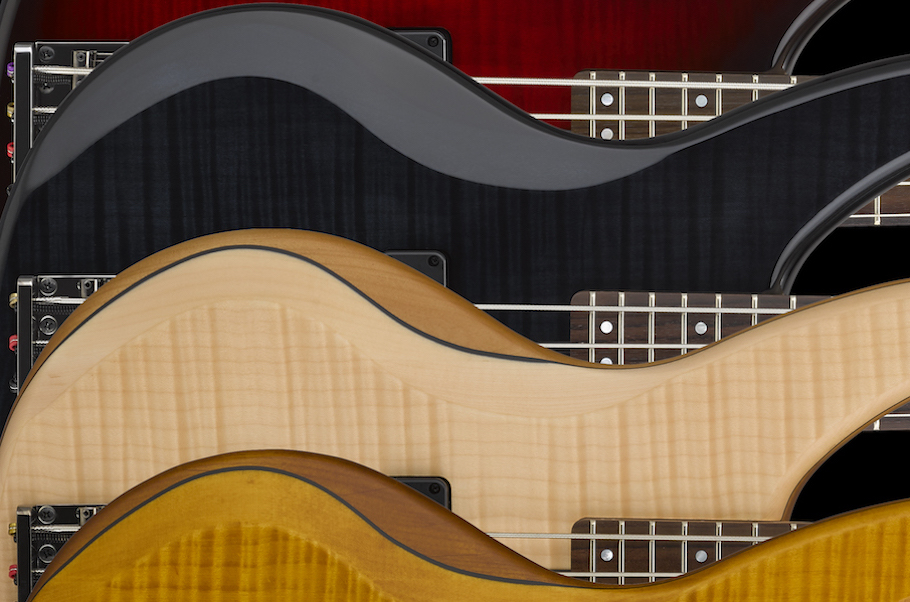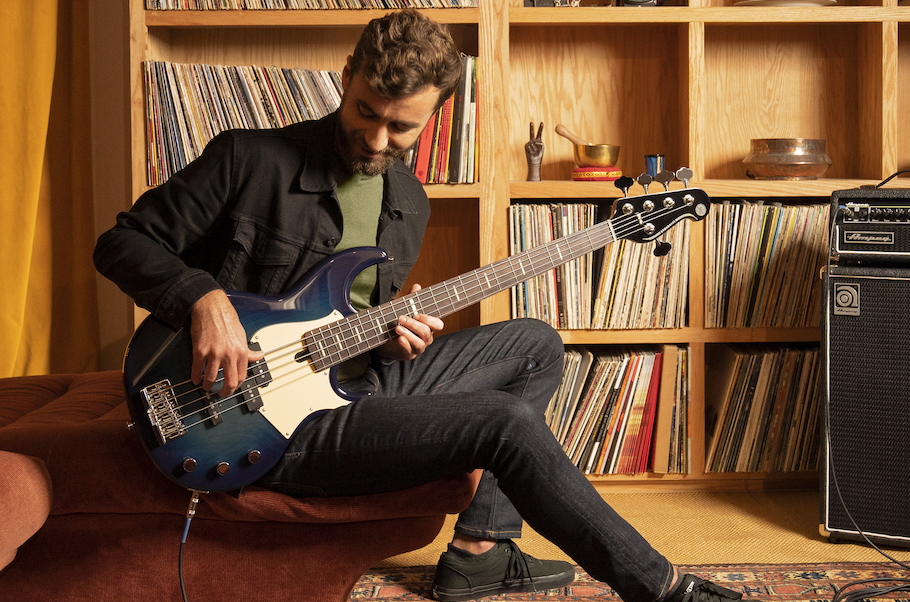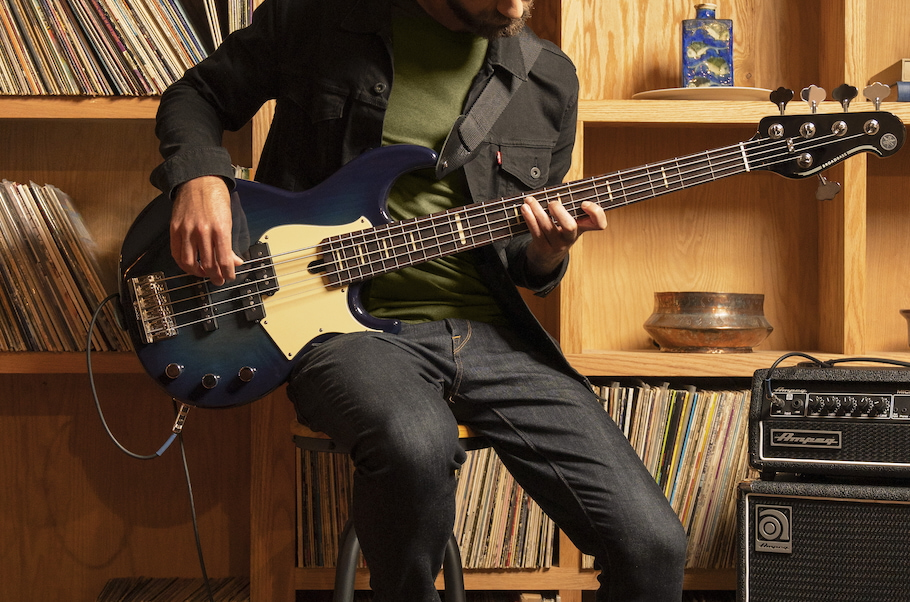A Bassist’s Guide to Playing Guitar, Part 1
Here’s how to make the transition go smoothly.
Regular readers of my blogs are familiar with my belief that learning to play even a little bit of keyboard — and understanding theory and harmony, which unfold quite naturally at the piano — will improve your bass playing. This sentiment is born from personal experience: When I attended graduate school for film scoring, I took piano lessons for two semesters, and although I had already been exploring chords and harmony on a 6-string Yamaha TRB bass (still available in Europe but since replaced in the U.S. by the newer TRBX line), the time I spent on keyboard put music theory in context and made me so much more aware of chord voicings, orchestration, arrangement, melodies and tonal colors.
Playing guitar can also make theory come alive, but the guitar lessons I took when I was five bored me to tears, and I didn’t take music seriously until I got my first drum as a seven-year-old. As I grew into a drummer/percussionist and then a bass player, I developed a distaste for guitarists who soloed too often and too loudly. I strove to be a supportive and solid team player, and I kept my thoughts to myself whenever guitar players sat in and played “lead bass.”
All those experiences made me uninterested in learning guitar … until now.
THE BASS/GUITAR PARTNERSHIP
Lead guitar may not be my thing, but another style of guitar playing has slowly snuck up on me. Over the years, I’ve come to realize how deeply the legacy of great R&B, soul, funk and African bass is intertwined with rhythm guitar. What would classic James Brown tunes be without rhythm guitarists like Jimmy Nolan and Bootsy’s brother, Phelps “Catfish” Collins? Steve Cropper is as much a part of the Stax rhythm-section sound as Donald “Duck” Dunn. The interplay between groove gods like Chic’s Nile Rodgers and Bernard Edwards, Tony Maiden and Bobby Watson of Rufus, and Meters legends Leo Nocentelli and George Porter Jr. are as crucial as those bass players’ respective connections with drummers Tony Thompson, André Fischer and Joseph “Zigaboo” Modeliste. The tradition continues today with players like bassist Eric “Pikfunk” Smith and guitarist Errol Cooney, who expertly bounce off each other as part of Janet Jackson’s rhythm section.
Perhaps it’s no surprise that I fell in love with the sound of baritone guitar, which is tuned a fourth lower than a standard guitar and strung with slightly thicker guitar strings. Baritones are usually associated with surf music, down-tuned metal and spaghetti Westerns, but their deeper sound feels both familiar and full of possibility. (Videos like this Prince-inspired rhythm guitar part played on a baritone show that it can be funky, too.) When I finally bought an inexpensive used electric baritone, I was immediately entranced. Traditional baritones are strung B-E-A-D-F#-B, which feels familiar to anyone who has spent time on 6-string basses that are tuned B-E-A-D-G-C, in fourths. I considered tuning the baritone just like my 6-string basses, but there are far fewer resources for guitarists who want to learn “fourths tuning,” so I’m sticking with traditional baritone tuning for the moment.
A SHIFT IN PERSPECTIVE
If you’re a bassist who’s planning to learn guitar, get ready for a shift in perspective. Guitar strings are, of course, much thinner and string spacing is tighter, so it’s common for beginners to inadvertently mute adjacent strings, but that doesn’t make it any less frustrating. (On the plus side, bending is a breeze and strings are way cheaper.)
Also, playing with a pick seems to be more of a requirement than it does on bass. Using a whammy bar can be a new thrill. The more time you spend on guitar, the more you’ll notice guitar hooks you might’ve missed the first (or millionth) time while focusing on juicy bass parts. Most significantly, your job description is different, and you’ll now be wrestling with chord shapes, understanding inversions and playing melodies while someone else holds it down on bass.
It can also be prudent to think about your learning style. I’ve chosen to take in-person lessons from a teacher who can help me develop good habits and keep me accountable, but if you learn best from videos, there’s an ocean of information on YouTube, as well as courses from pros like my Yamaha blog colleague Robbie Calvo, whose comprehensive and inspiring The Rhythm Architect lessons can help you along this journey.
Last but not least, find an instrument that you don’t have to fight. The Yamaha FG800J I recently acquired is showing me that there really is nothing like the tone or immediate response of a well-crafted acoustic guitar. The FG800’s string spacing is just a touch wider than my electric baritone, and every chord I struggle to play is rewarded by its rich, balanced sound. I’m grateful for each tiny victory and curious to see where this will go, and how it will affect my bass playing.
Join us in a few months for Part 2!














